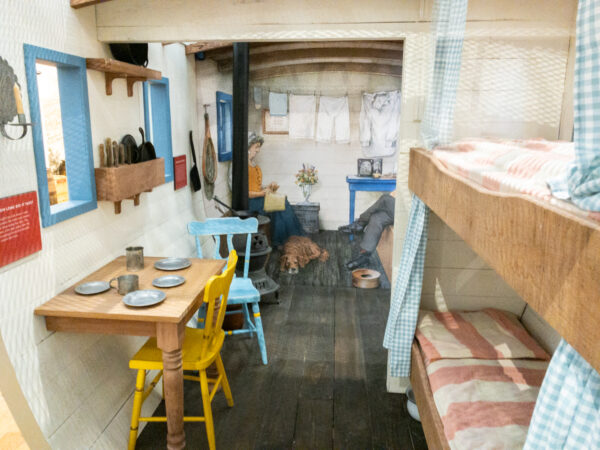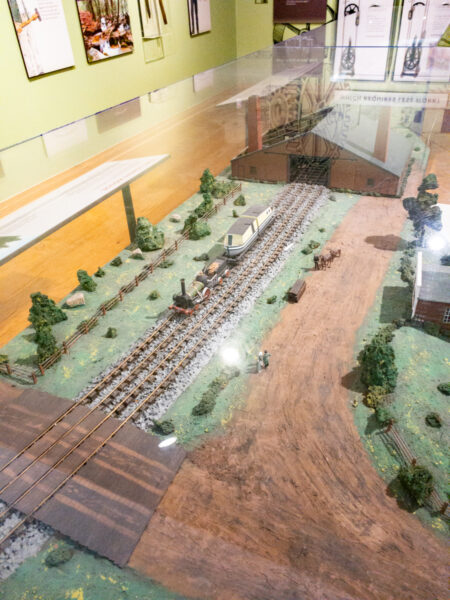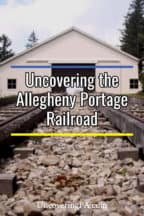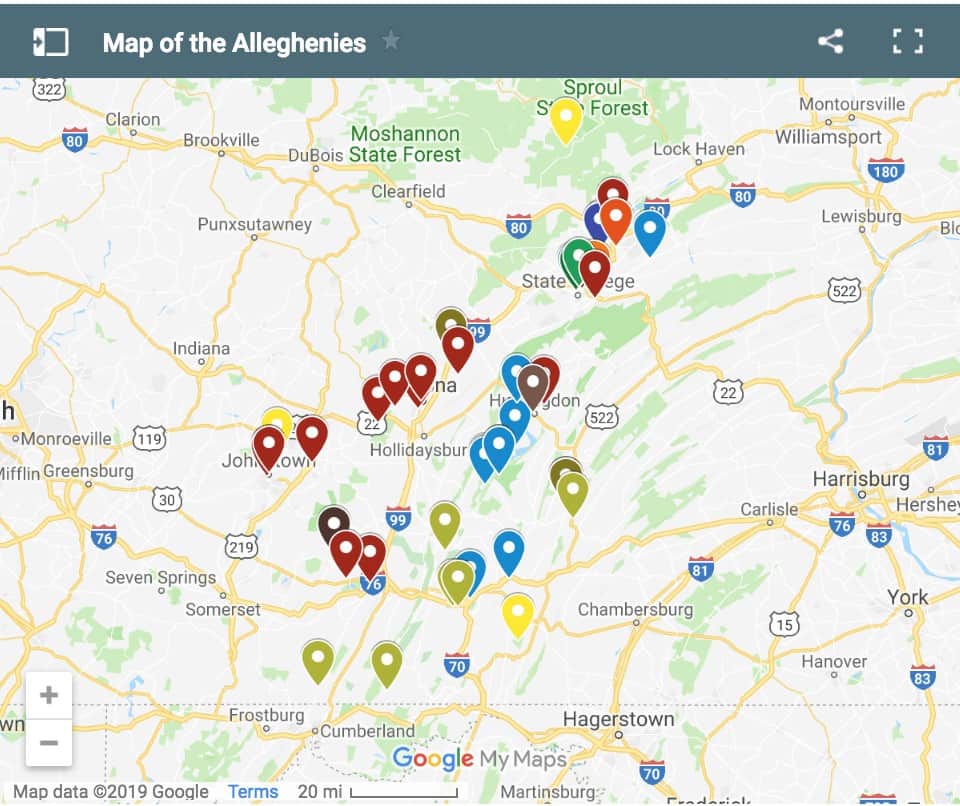Using an ingenious combination of canals, horses, and steam locomotives, the portage railroad cut travel time to a mere four days. The leap forward was amazing. I mean, imagine a new airplane technology that shortened the travel time from Philadelphia to Australia to only an afternoon.
Surpassed in speed by the Mainline Railroad and Altoona’s Horseshoe Curve, it closed operations in 1854. However, during its 20 years of operation, the Allegheny Portage Railroad was one of the nation’s most important transportation routes for people and goods heading west.

Today, the Allegheny Portage Railroad National Historic Site is, in my opinion, one of the most interesting places in Pennsylvania that the National Park Service operates.
From the moment I walked into the visitor center, I was impressed by the detailed displays they offered and clear explanations of how the railroad worked.
Even better, their information video was absolutely fantastic! Easily the best I’ve seen at a historical site in a long while. When you visit the railroad, make sure you take the time to watch the video.

The visitor center was completely redone in 2019 and, having visited both before and after the renovation, I was very impressed by the new displays. A lot of thought was put into making them high quality and informative.
During your visit, you can see several dioramas and even walk into a recreated canal boat. You can also see the Lafayette, a locomotive that pulled canal boats along the inclined railroad.

From the visitor center, we headed over to the actual historic site.
Included in the main area of the site are one of the engine houses and a restored tavern that served riders. There is also an auxiliary area near Johnstown that has the nation’s first railroad tunnel, the Staple Bend Tunnel.
I’m definitely looking forward to stopping there at a later date.

The engine house is one of ten that were built along the 36-miles of the Allegheny Portage Railroad. The job of the engine house was the haul boats, goods, and people up and down the inclines that made up the Portage Railroad.
Using rope, railroad track, and specially designed cars, a steam engine pulled each car to the top of the incline before sending them on their way, led at first by horses and later by steam engines, to the next incline.

Also on site is the Lemon House.
Serviced primarily as a restaurant and bar to patrons of the Allegheny Portage Railroad, the Lemon House served an important function in the haul of people over the Allegheny Mountains. Inside, rooms have been restored to show what they looked like during the 1840s, with one room set aside as a bar, one as a restaurant, and one as a parlor.

Overall, the Allegheny Portage Railroad National Historic Site in Cambria County is a fantastic place to visit for anyone interested in transportation or history in general. Given that it’s totally free to visit, it’s definitely a spot you won’t want to miss.
I personally found it to be one of the most fascinating places I’ve been to in Pennsylvania.
Looking to explore more of the area’s history? Check out the Railroaders Memorial Museum, the Mount Assisi Gardens, and Chimney Rocks Park.




 "
"




Great write-up. I too found this place surprisingly interesting. A hidden gem for sure.
I need to visit the museum. Been working on my family genealogy and learned that my 3rd great grandfather was a Captain on a Canal Boat that was part of the Portage line.
He had lived in Livermore, PA. The town was flooded at some point by the Army Core of Engineers, but the cemetery is still there, atop a hill.
Thanks for all the information you share! Love it!